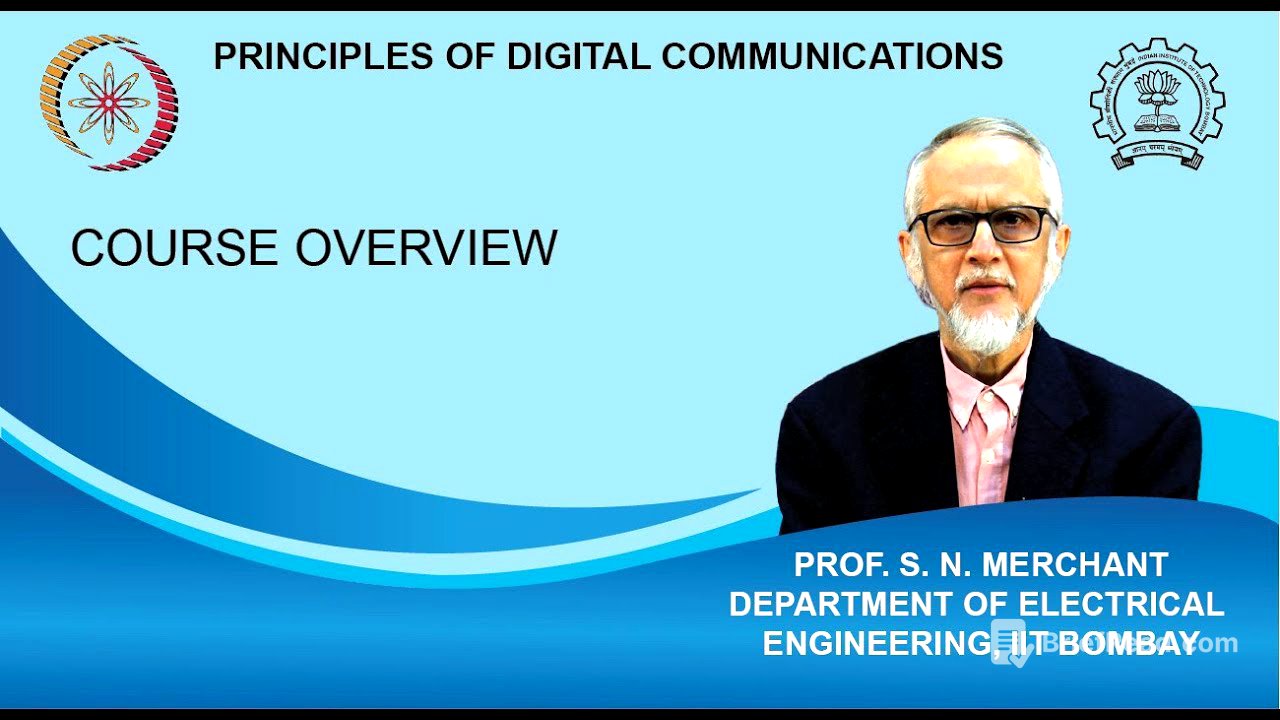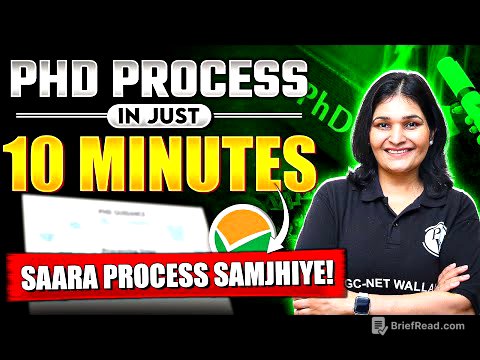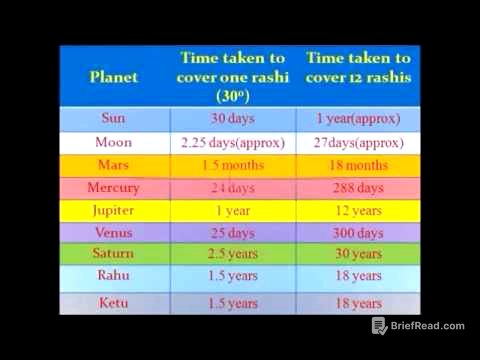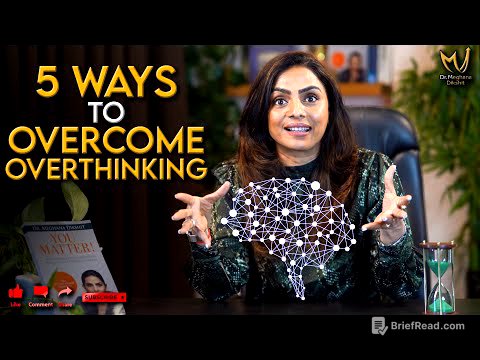TLDR;
Namaste! This course, Principles of Digital Communications, aims to give you a solid understanding of digital communication principles and how to design and analyze these systems. We'll be comparing analog and digital methods, looking at how digital communication uses waveforms and symbols, and how it handles noise. We will also be covering channel capacity, source and channel coding, modulation techniques, and ways to deal with channel imperfections like noise and interference.
- Analog communication is inefficient in terms of power and bandwidth.
- Digital communication uses a finite set of waveforms and symbols.
- Channel coding adds redundancy for error detection and correction.
Course Intro: Analog vs Digital Communication [0:16]
The course begins with an overview of communication systems, highlighting the differences between analog and digital approaches. Analog systems, like early telephone networks and radio, use methods like AM and FM. The quality of the received message in analog communication depends on how well the waveform carrying the message can be reproduced, and it requires a high signal-to-noise ratio, often achieved with high-power transmitters. Analog communication is not efficient in terms of power and bandwidth, and it struggles with integrating different types of messages like audio, video, and text.
Digital Communication Fundamentals [4:29]
Digital communication, unlike analog, doesn't focus on faithfully reproducing the baseband waveform. Instead, it uses a finite set of modulation waveforms, representing the message signal with symbols or letters composed of binary digits (bits). The receiver detects the energy content of each baseband waveform and estimates the transmitted symbol. If the signal-to-noise ratio is high enough, the symbol is likely to be detected correctly. The key difference is that digital communication focuses on detecting symbols rather than preserving the exact shape of the pulse, making it more robust to noise and imperfections in the channel.
Transmitter and Receiver Blocks in Digital Communication [8:52]
The general communication system is further broken down into blocks for transmitter and receiver. The transmitter includes a source encoder, channel encoder, and modulator. The receiver includes a demodulator, channel decoder, and source decoder. The source encoder removes redundancy from the source message, representing it with symbols from a finite alphabet, often binary. The channel encoder then adds redundancy back in a controlled way to enable error detection and correction at the receiver. The modulator maps the symbol sequence into continuous-time waveforms for transmission across the channel.
Channel Models and Their Imperfections [13:55]
The design and analysis of communication systems require engineering models of the channel. The channel model depends on the physical medium used for transmission. Guided media like twisted pair, coaxial cable, and optical fiber may exhibit signal distortion, causing inter-symbol interference (ISI). Space channels, like satellite communication, typically add Gaussian noise. Fading, where the received signal strength varies with time, is a major issue in mobile communications.
Course Overview: Information Theory and Source Coding [16:15]
The course will begin with the fundamentals of information theory, which provides a quantitative measure of information and mathematical modeling of information sources. Shannon's source coding theorem, which imposes a bound on the average number of bits per symbol needed to represent a discrete memoryless source, will be studied. Short code words should be assigned to messages with high probability, and long code words to those with low probability.
Channel Coding Theorem and Signal Space [18:02]
Shannon's channel coding theorem, a key result in information theory, will be discussed. It allows digital communication system designers to choose modulation waveforms that optimize power or bandwidth efficiency. As long as the transmission rate is below the channel capacity and the signal-to-noise ratio per symbol is above the Shannon limit, reliable communication with an arbitrarily small error rate is possible. The course will also cover representing digital signals as vectors in a signal space or signal constellation, using orthogonal series and the Graham-Schmidt procedure.
Pulse Code Modulation and Digital Pulse Modulation [20:36]
Pulse code modulation (PCM), a process for representing analog signals with coded pulses through sampling and amplitude quantization, will be studied. Uniform and non-uniform quantizers, including companders, will be covered. Differential pulse code modulation (DPCM) and delta modulation, which use prediction to reduce channel bandwidth requirements, will also be discussed.
Baseband Modulation and Line Codes [21:57]
The course will cover baseband modulation, where binary sequences are converted into electrical waveforms for transmission. Different types of pulse signals or waveforms used to represent binary signals, also known as line codes, will be explored. The choice of line code depends on factors like the available transmission bandwidth of the communication channel. The power spectral density of different line codes will also be evaluated.
Band Limitation and Inter-Symbol Interference (ISI) [23:45]
The effects of band limitation on transmitted signals will be examined. Band limitation, which can be caused by the channel medium or regulatory requirements, leads to the dispersion of signals and inter-symbol interference (ISI). The Nyquist criteria for zero ISI will be studied, along with the design of optimum demodulators that can achieve maximum output signal-to-noise ratio and zero ISI. Techniques for mitigating ISI by deliberately allowing some ISI in a controlled manner, known as partial response signaling, will also be covered.
Digital Modulation Techniques [26:07]
The course will cover digital modulation techniques for transmitting information over physical channels. Binary modulation techniques like binary shift keying (BSK), binary phase shift keying (BPSK), binary FSK, and minimum shift keying (MSK) will be studied. M-ary modulation techniques like quadrature PSK (QPSK), M-ary amplitude shift keying, M-ary quadrature amplitude modulation (M-QAM), and M-ary FSK will also be covered. The structure of each modulation technique will be studied using the signal space approach to design the modulator and optimum coherent demodulator, and to evaluate the power spectral density.
Non-Coherent Demodulation and Channel Coding [28:40]
Non-coherent demodulation techniques for phase shift keying, such as differential phase shift keying (DPSK), and FSK will be studied for situations where synchronization between the transmitter and receiver is difficult. Finally, the course will cover channel coding, which introduces redundancy in a controlled manner for error detection and correction purposes, with a focus on linear block coding.
Prerequisites and Reference Books [29:19]
The prerequisites for this course are signals and systems, analog communication, and probability, random variables, and random processes. Students are expected to have some exposure to basic concepts from these topics, such as power spectral density. The reference books for the course are "Digital Communication System" by Simon Haykin and "Digital Communication" by Proakis and Masoud Salehi.









